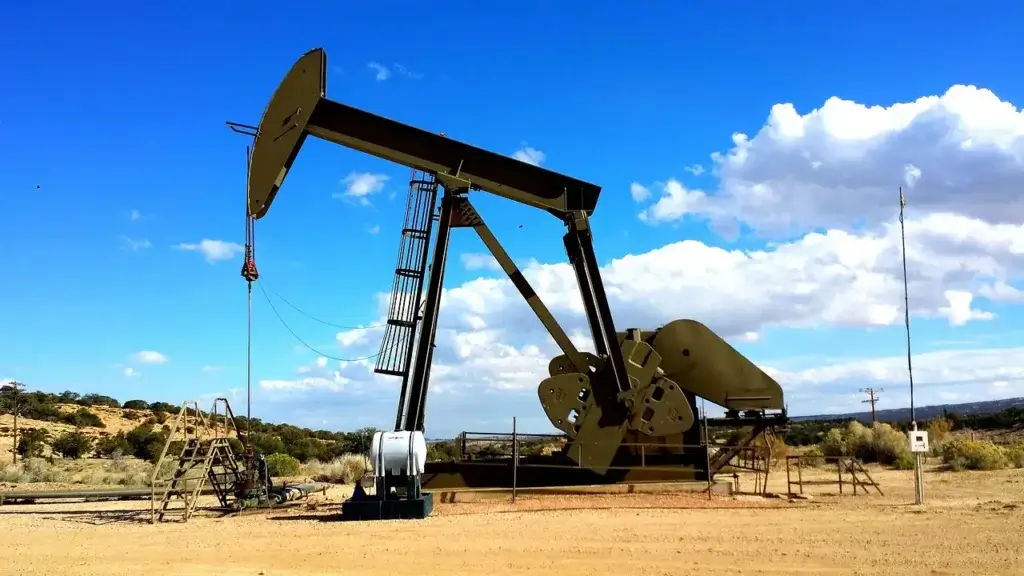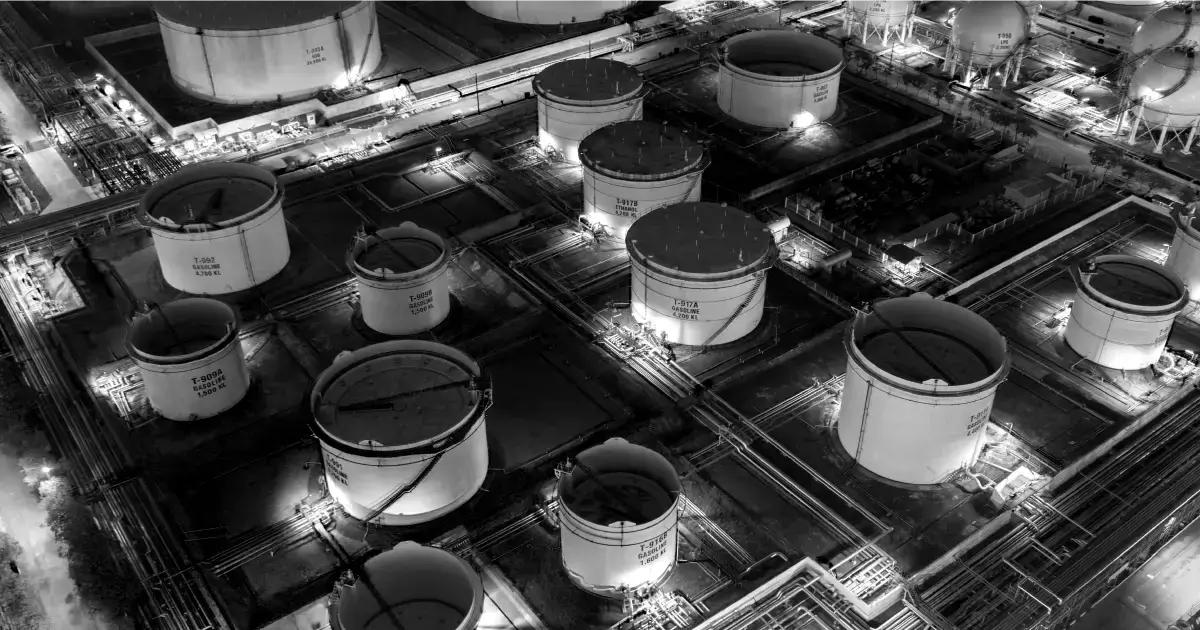Did you know that over 80% of the world’s energy comes from fuels? Whether it’s powering vehicles, heating homes, or generating electricity, fuel production plays a crucial role in modern society. But have you ever wondered how is fuel made?
There are various types of fuel, each produced through distinct processes. Fossil fuels, like coal, oil, and natural gas, are extracted from the Earth’s crust, where they’ve formed over millions of years. Biofuels, on the other hand, come from renewable sources like plants and organic waste. Then, there are alternative fuels like hydrogen, which are made through electrochemical processes.
We’ll discuss a wide variety of fuel outside the 3 types of fuel such as fossil fuels, biofuels, and other alternatives, shedding light on how these essential energy sources are created and their impact on our world.
TABLE OF CONTENTS

The Fuel Production Process
There are numerous steps in the fuel-making process, where you’ll get to know how crude oil is formed and it’s different components divided.
Crude Oil Extraction
To discover how is fuel made, we must first answer the question of how crude oil is formed since that is the first step to oil formation.
Crude oil is mainly extracted through drilling, where wells are drilled deep into the Earth’s crust after identifying oil-rich sites via geological surveys. For oil and gas in shale formations, hydraulic fracturing (fracking) is used, injecting high-pressure water, sand, and chemicals to release the trapped resources.
When drilling and fracking aren’t enough, enhanced oil recovery methods, such as injecting gasses or chemicals, help improve oil flow. In some cases, natural pressure allows oil to flow freely (primary recovery), but mechanical pumps are needed as pressure declines.
Refinement
How is oil made?
This brings us to our next step which is refinement.
The first step in refining crude oil is fractional distillation, which separates hydrocarbons by boiling points. Heated to 350–400°C (660–750°F), crude oil vaporizes and enters a distillation column, where heavier hydrocarbons condense lower and lighter ones condense higher. Methane, ethane, propane, and butane are collected at the top as LPG, while naphtha and diesel condense lower for further processing.
After distillation, conversion processes like cracking and reforming refine the products. Cracking breaks heavy hydrocarbons into lighter ones like gasoline and diesel by heating them to 450–750°C. Reforming converts low-octane naphtha into high-octane gasoline using a platinum catalyst, producing hydrogen as a byproduct for sulfur removal.
Blending and Additives
Blending combines different fractions of refined crude oil to create fuels like gasoline, diesel fuel, and jet fuel, ensuring they meet specific requirements for octane/cetane levels, vapor pressure, and performance. This process involves mixing various hydrocarbons and additives to achieve the desired fuel characteristics, such as stability, combustion efficiency, and environmental compliance.
Key additives include:
- Octane boosters (raise octane rating),
- Detergents (prevent carbon deposits),
- Antioxidants (increase fuel stability),
- Cold flow improvers (prevent gelling in low temperatures),
- Cetane improvers (aid diesel ignition),
- Biocides (kill microorganisms to prevent sludge formation).
Quality Control and Testing
Fuel quality control begins with sampling at various production and distribution points, including refineries, pipelines, tanks, and retail stations. Samples are collected following strict protocols to avoid contamination.
Key tests include:
- ASTM D613 to determine cetane number using a specialized engine
- ASTM D323 for measuring vapor pressure (RVP)
- ASTM D2622 or D4294 for sulfur content analysis via X-ray fluorescence
- ASTM D93 for flash point, or the minimum temperature required for the fuel to ignite (Pensky-Martens Closed Cup).
These tests ensure the fuel meets standards set by ASTM, EN, EPA, or other regulatory bodies for safety and performance.
Types of Fuel and Their Production
There are different types of fuel, and their production processes vary accordingly. Here is a breakdown of the different production processes of these fuels:
Gasoline
You might wonder what is gasoline or what is the difference between gasoline and diesel? Well, gasoline is a refined version of diesel that is created by blending several hydrocarbon components that come from various refining processes, such as:
Gasoline blending involves combining components like reformate (rich in aromatics, boosts octane), alkylate (high-octane, clean-burning), isomerate (balances volatility), and butane (adjusts vapor pressure, aiding cold-starts in winter blends). The goal is to produce fuels with different octane ratings:
- Regular Unleaded (87 octane)
- Mid-grade (89 octane)
- Premium (91-93 octane)
Octane ratings measure fuel’s resistance to knocking, which occurs when fuel ignites prematurely in the engine, potentially causing damage. These ratings mainly depend on what gasoline is used for, which varies according to vehicles and equipment. So it’s important to ensure the correct octane rating for optimal performance and protection.
Diesel
Now, how is diesel made? The first and fundamental step is the fractional distillation discussed above, which separates crude oil into various hydrocarbon fractions based on their boiling points.
Heavier crude oil fractions are exposed to high pressure, high temperature, and hydrogen in the presence of a catalyst. Hydrogen is added to the hydrocarbon chains, which not only breaks the larger molecules into smaller ones but also removes impurities like sulfur and nitrogen. This process is usually known as hydrocracking.
Diesel fractions condense in the middle section of the column because they have a higher boiling point range (about 250–350°C or 480–660°F) compared to lighter fuels like gasoline.
After hydrocracking, the resulting mixture of hydrocarbons is sent to a fractionation column, where it is separated based on boiling points. The fraction that meets the boiling point range for diesel (roughly 180°C to 360°C, or 356°F to 680°F) is isolated and further treated to meet fuel quality specifications (e.g., cetane number, sulfur content).
Biofuels
Biofuels are renewable energy sources derived from organic materials, and include bioethanol and biodiesel.
Bioethanol is an alcohol produced by fermenting sugars from plant materials like sugarcane and corn. Starchy feedstocks such as corn are milled to release sugars, while cellulosic feedstocks such as straw require more preprocessing, like grinding or hydrolysis. Yeast ferments the sugars, producing ethanol and CO2. The ethanol mixture is then distilled and dehydrated to produce fuel-grade ethanol, which is often used as a gasoline additive to boost octane and reduce emissions.
Biodiesel is made from vegetable oils, animal fats, or recycled cooking oils. The primary process is transesterification, where oils or fats react with alcohol (methanol or ethanol) and a catalyst (sodium or potassium hydroxide) to form fatty acid methyl esters (FAME), or biodiesel, and glycerol. After separating the glycerol, biodiesel is purified through washing and drying. It can be used in diesel engines or blended with petroleum diesel.
Synthetic Fuels
Synthetic fuels, or synfuels, are produced from non-petroleum sources through processes like gasification and steam reforming. Gasification thermally decomposes carbon-based materials in limited oxygen to create syngas (a mix of carbon monoxide, hydrogen, and carbon dioxide).
The Fischer-Tropsch process then converts syngas into liquid hydrocarbons, such as synthetic diesel and kerosene, using a catalyst (iron or cobalt) under high pressure and temperature.
Other Types Of Fuel
Hydrogen Fuel
Hydrogen fuel is key to clean energy, especially when produced through electrolysis powered by renewables. In reforming, hydrogen is extracted from natural gas, though this emits CO₂ unless paired with carbon capture. Hydrogen is zero-emission, producing only water vapor when burned or used in fuel cells, which efficiently convert hydrogen into electricity.
However, challenges include high costs, limited infrastructure, low energy density, and flammability. Fuel cells, though efficient, are expensive due to materials like platinum and degrade over time, limiting widespread adoption despite hydrogen’s potential in energy storage and various sectors.
Nuclear Fuel
Nuclear fuel relies on uranium, which is mined and then enriched to increase the concentration of uranium-235, the isotope needed for energy production. Nuclear fission occurs when uranium-235 atoms are bombarded with neutrons, causing them to split and release a large amount of energy as heat. This heat generates steam to drive turbines and produce electricity.
Safety concerns include the risk of radiation leaks, reactor meltdowns (as seen in Chernobyl and Fukushima), and the potential for nuclear proliferation. Waste management is another challenge, as radioactive waste remains hazardous for thousands of years. Long-term storage solutions, like deep geological repositories, are necessary to safely contain nuclear waste.
Shaping the Future of Fuel: Challenges and Opportunities Ahead
Each fuel type has its own methods, challenges, and environmental impacts. From distillation and cracking in oil refining to electrolysis and reforming for hydrogen, and the nuclear fission process in nuclear energy, fuel production is highly technical.
Understanding these processes is crucial as it helps us understand the challenges in meeting energy demands, addressing environmental concerns, and transitioning to cleaner energy sources. This knowledge fosters better decision-making for a sustainable energy future.
Fuel Logic offers a comprehensive range of fuel delivery services to meet all your needs, from generator refueling to DEF Delivery. Whether you’re looking for reliable fuel solutions in your area or have questions, our FAQ provides quick answers. Need personalized assistance? Call us or place your fuel order online for fast and efficient service. Explore Fuel Logic to see how we can simplify your fuel management!
FAQs
Can you make your own fuel?
Yes, some fuels like biodiesel can be made at home using waste vegetable oils through a chemical process called transesterification. However, making other fuels like gasoline, diesel, or hydrogen requires complex industrial processes and equipment, making home production impractical and often illegal.
How many years of oil is left in the world?
Estimates vary, but current proven oil reserves could last about 50 years at current consumption rates. However, this figure depends on new discoveries, technological advances, and shifts toward alternative energy sources.
Will we run out of oil?
Eventually, oil is a finite resource. While we won’t run out immediately, easy-to-access oil will become scarcer, leading to higher costs and the need for alternatives. Renewable energy and other fuel technologies are critical for a future without oil dependency.
What are the processes for fuel production?
Fuel production involves multiple processes, such as, crude oil refining to make gasoline and diesel, electrolysis and reforming for hydrogen fuel, and biomass conversion for biofuels. Each process is specific to the fuel type and requires advanced technology and infrastructure.


